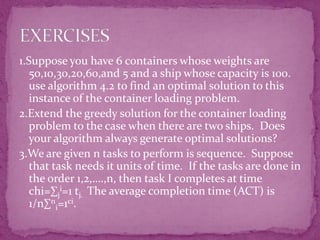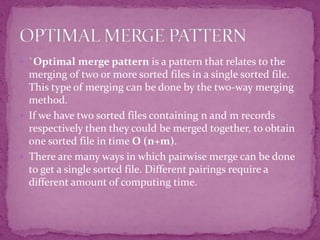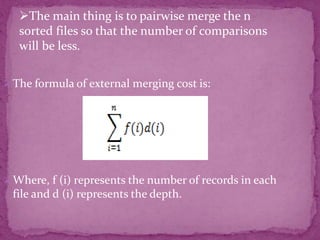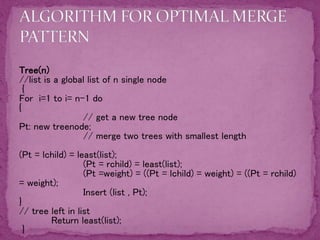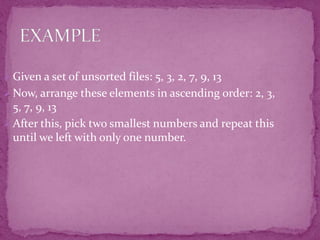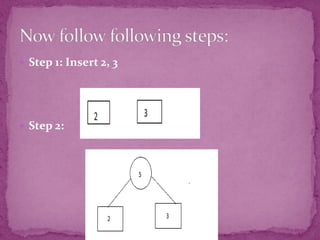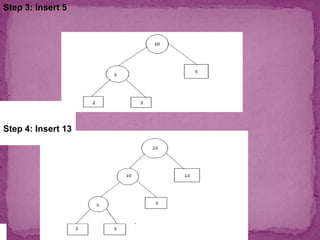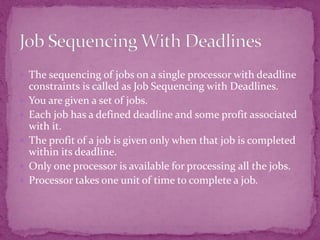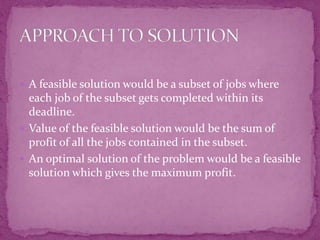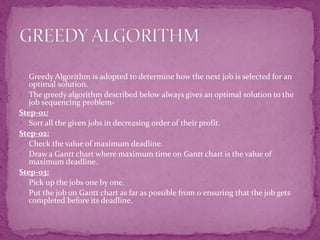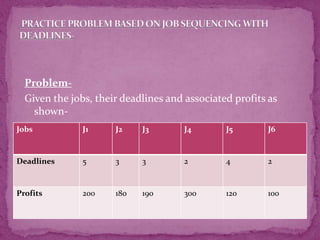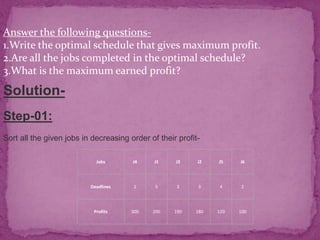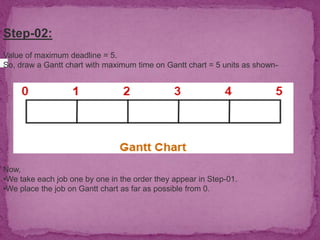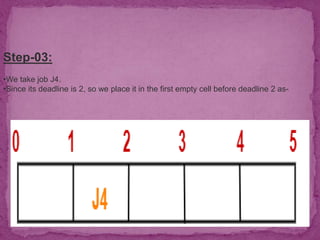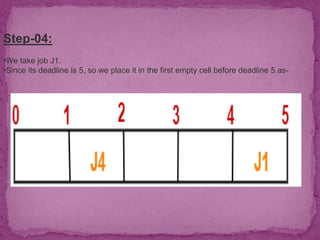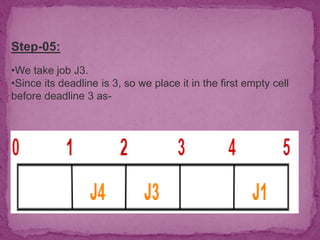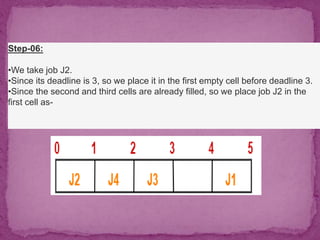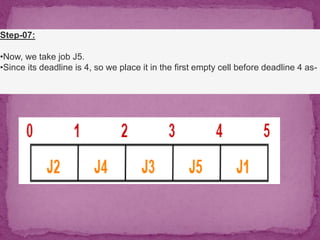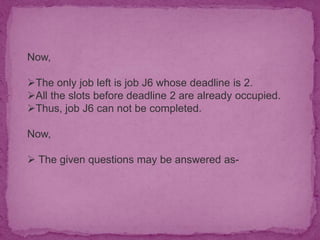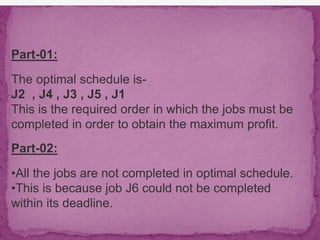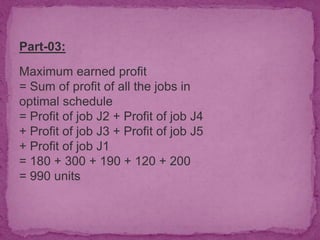The document discusses various applications of the greedy method in algorithm design, such as solving the knapsack problem, job sequencing with deadlines, and optimal merge patterns. It outlines how the greedy algorithm selects the minimum weight containers for loading a ship and describes how to schedule jobs for maximum profit within their deadlines. The text includes pseudo-code and examples to illustrate these techniques and their effectiveness.
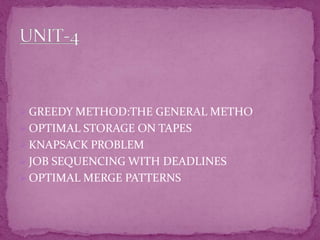

![1.Algorithm Greedy(a,n)
2.//a[1:n]contains the n inputs.
3.{
4. solution:=0;//Intialize the solution.
5. for i:=1 to n do
6. {
7. x:=select(a);
8. if Feasible(solution,x)then
9. solution:=union(solution,x);
10. }
11. return solution;
12.}](https://image.slidesharecdn.com/unit4-200226091418/85/data-structures-and-algorithms-Unit-4-3-320.jpg)
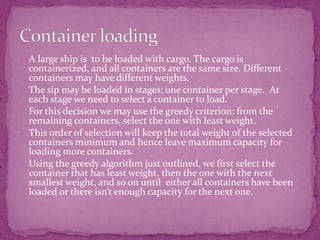
![{
//sort into increasing order
sort (c,numberO f Containers);
n:=numberO f Containers;
//initialize x
for i:=1 to n do
x[i]:=0;
//select containers in order of weight
i:=1;
While(i<n&&c[i]weight<capacity)
{
//enough capacity for container c[i].id
x[c[i].id]:=1;
Capacity--=c[i].weight;
//remaining capacity
i++
}
}](https://image.slidesharecdn.com/unit4-200226091418/85/data-structures-and-algorithms-Unit-4-5-320.jpg)
